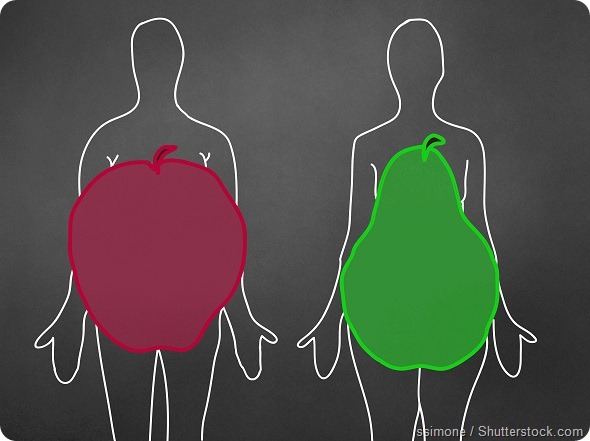People with type 1 or 2 diabetes who have apple-shaped bodies with excessive fat around the abdomen and stomach, can be at higher risk of serious heart disease than patients with pear-shaped figures who store excess fat around their hips, according to a new study from Intermountain Medical Center Heart Institute and John Hopkins University.

The research, presented at the 2016 American College of Cardiology Scientific Session in Chicago on 2nd April, considered the health of 200 diabetic men and women without coronary disease. It revealed that an apple-shaped figure with abdominal obesity alone, regardless of total body weight and body mass index, can better predict regional left ventricular dysfunction, a condition that can cause heart diseases such as congestive failure.
The left ventricle is one of four chambers in the heart and its function is to help pump oxygen-rich blood around the body. While the patients took part in the study, they received computed tomography (CT) screenings of their heart and echocardiograms to look at the organ and its surrounding vessels.
High waist circumference has previously been linked to heart failure, coronary artery disease and metabolic syndrome, a condition involving high blood pressure, increased cholesterol and excess sugar levels.
Brent Muhlestein, co-director of research at the Intermountain Medical Center Heart Institute in Salt Lake City says, “Our research examined patients with diabetes, who are considered high risk for developing heart disease already, and found that the shape of your body determined if you were at a greater risk to develop left ventricular dysfunction.
This study confirms that having an apple-shaped body — or a high waist circumference — can lead to heart disease, and that reducing your waist size can reduce your risks.”
Being overweight has been identified as a major global health risk and researchers have linked weight increase to stress on the heart and to poor ventricular function. Cardiovascular disease impacts one in three people during their lifespan with around a third dying from heart disease or a related condition before diagnosis.
Boaz D Rosen, MD, John Hopkins, the study’s principal investigator says: “We specifically found that waist circumference appears to be a stronger predictor for left ventricle dysfunction than total body weight or body mass index (BMI).
Dr. Rosen went on to say that further studies are needed to confirm the findings. “It will be important to see if these patients are indeed at risk of developing heart failure or coronary artery disease in the future.”
John Hopkins University and Intermountain Medical Center Heart Institute previously collaborated on the faCTor-64 study of diabetes patients, which showed a correlation between a greater body mass index and an increased risk of heart disease. The people in the study were all believed to be at high risk of heart attacks, strokes or death but without symptoms of heart disease. They were randomly screened for coronary heart disease using CT coronary angiography, a technology that measures the blood flow through coronary arteries. The patients then received advice on how to care for their health and were tracked for any heart events.